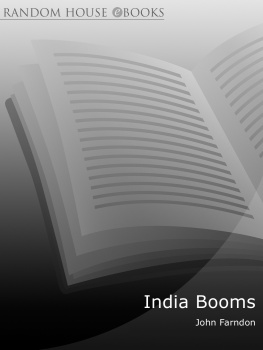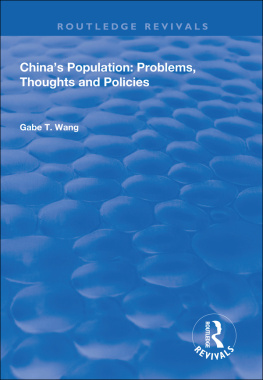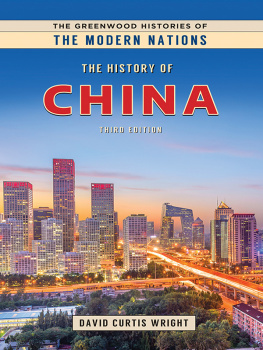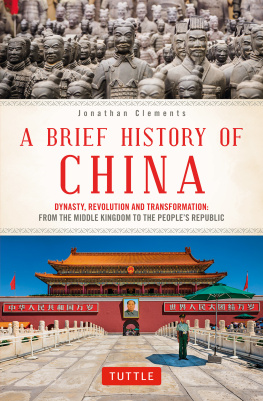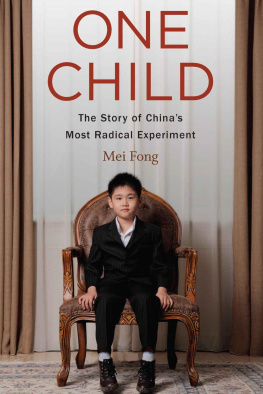This eBook is copyright material and must not be copied, reproduced, transferred, distributed, leased, licensed or publicly performed or used in any way except as specifically permitted in writing by the publishers, as allowed under the terms and conditions under which it was purchased or as strictly permitted by applicable copyright law. Any unauthorised distribution or use of this text may be a direct infringement of the author's and publisher's rights and those responsible may be liable in law accordingly.
John Farndon has asserted his right under the Copyright, Designs and Patents Act 1988 to be identified as the author of this work
This electronic book is sold subject to the condition that it shall not by way of trade or otherwise, be lent, resold, hired out, or otherwise circulated without the publisher's prior consent in any form other than that in which it is published and without a similar condition including this condition being imposed on the subsequent purchaser
The Random House Group Limited Reg. No. 954009
INTRODUCTION: THE NEW CHINA
'It doesn't matter if it's a black cat or a white cat; as long as it can catch mice it's a good cat.'
Deng Xiaoping
On 18 June 2007, the unfinished Shanghai World Financial Centre overtopped the neighbouring Jinmao Tower to become the tallest building on the Chinese mainland at 423.8 metres (1,390 feet), compared with Jinmao's 420.5 metres (1,380 feet). By the time it was complete in March 2008, this 101-storey tower was the third tallest building in the world at an astonishing 492 metres (1,614 feet), eclipsed only by the Burj Dubai, which is due for completion in late 2008 and will reach a height of 531.3 metres (1,743 feet), and Taiwan's Taipei 101, which makes it to 508 metres (1,666 feet), but only with the aid of a 60-metre (197-feet) spire.
The Shanghai World Financial Centre is just one of the skyscrapers going up in Shanghai's financial district of Pudong as it rolls out the biggest urban building programme the world has ever seen. With its huge population, China has always been able to build on a massive scale, as the Great Wall and the Grand Canal bear witness, but for a long time that ability has lain dormant. Now it is being unleashed again in Shanghai. Barely fifteen years ago, Pudong was open marsh and countryside. Today it is a city of 1.4 million people and swelling by the hour. Already, Pudong is eight times the size of Canary Wharf, London's financial district. Indeed, it's almost as big as the city of Chicago. And its skyline of state of-the-art skyscrapers, designed by the world's top architects, have already begun to make New York's Manhattan look small and dated to many visitors winging in to Shanghai's new airport, and being whisked by the magnetic levitation train, the world's fastest train, into the city.
Building up China
It's not just Shanghai that is seeing this whirlwind of construction. Dozens of Chinese cities from Beijing to Shenzhen are being transformed as bulldozers and wrecking cranes trundle in to sweep away the old hutongs (lane houses) and shanty towns to clear the path for the multi-lane expressways, glitzy shopping malls and shimmering skyscrapers that are becoming a symbol of the new China. No developing nation has ever matched the amount of foreign investment that has come China's way in the last twenty years and no nation has ever had such a gigantic labour force to use to such dramatic effect.

China is currently home to a quarter of the world's population, and at the time when Europe was in the Dark Ages China was the world's most advanced civilisation by far. Yet for five hundred years its development has been lagging behind much of the rest of the world. All that is now changing. China is transforming itself at an astonishing rate. No longer a backwater, many fevered commentators proclaim, China could be set to dominate the world in the twenty-first century, overtaking the USA as the next superpower.
The statistics certainly are staggering. China's 1.3 billion citizens already have over three hundred million mobile phones and two hundred million Internet users. It's the world's largest producer of coal, steel and cement, the second largest consumer of energy and the third largest importer of oil. It makes two-thirds of the world's photocopiers, microwave ovens, DVD players and shoes and pretty much all the world's toys. More than half the world's cranes are busy at work in China helping to create the largest megacities the world has ever seen, with just one of these cities already home to more people than all of England. Indeed, Chinese people are moving from the rural interior into the booming coastal cities in what is by far the biggest human migration in the history of the world.
Consumer colossus or totalitarian titan?
In one way, China seems to be hurtling down the path to the consumer society at a pace and on a scale that has never been seen before. And some see it as an almost frightening triumph of western values. Yet, on the other hand, China remains in the hands of the same Communist Party that has ruled with an iron grip since 1949. More people in China live without an elected government than in the rest of the world put together. While most of the world has moved falteringly towards democracy, of a kind, China remains one of the few countries without an elected national government and without any guarantees of basic freedoms, and the memories of the Tiananmen Square massacre in 1989 are still raw.
There is no doubt that the whole issue of China and its place in the world has observers in the West excited. Documentaries, feature articles and magazine specials on the new China appear with ever increasing frequency in the media, and countless new books are hitting the bookstalls with titles such as China Shakes the World, China: Friend or Foe?, The ChangingFace of China and The Writing on the Wall.
Oriental dream
On the one side are those who are excited by what is happening. Business pundits in particular seem to drool at the massive opportunities offered by the Chinese market. The startling growth of mobile-phone ownership, for instance, is cited as a sign of the riches to be earned once China's middle class has money to spend. With China's economy growing at almost 10 per cent a year and the country's city construction boom speeding up, the investment opportunities seem huge and copper-bottomed. Political pundits, meanwhile, note how far China's totalitarian Communist government has opened the country to market economics and individual aspirations. As Chinese people gain more and more economic freedom, they believe, so the pressure for political freedom and democracy will become irresistible. Some pundits even predict that China may become at least partially democratic within the next decade.



